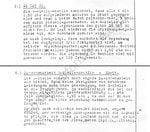Glider
Major
I have been looking around and the charts that I have found indicate that the 14 and K4 were close with the K4 having a speed advantage between 14 and 24 Thousand ft and the 14 faster below and above that band. This is using 18pd Boost in the 14 and 1.8 ATA on the K4. The absolute max of the K4 was 441MPH and it is noted that the often quoted 452 mph was an estimate using an experimental thin blade prop that didn't make production.
In climb the 14 had a small but consitant advantage at all altitudes.
It should be noted that the German figures are from German documents not Allied tests of German aircraft
Interesting reference only is made to a German paper that contains quote 'A devastating comparison between the Mustang and the 109' unfortunately this I have not been able to find.
In climb the 14 had a small but consitant advantage at all altitudes.
It should be noted that the German figures are from German documents not Allied tests of German aircraft
Interesting reference only is made to a German paper that contains quote 'A devastating comparison between the Mustang and the 109' unfortunately this I have not been able to find.

